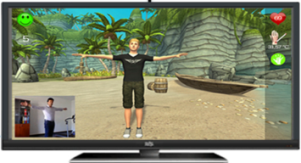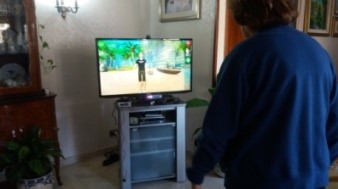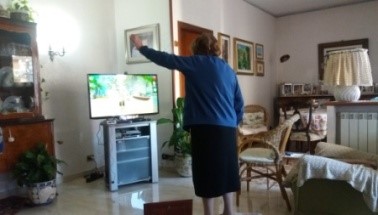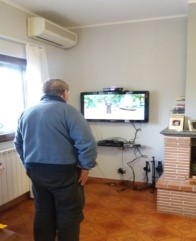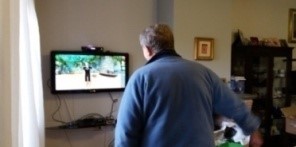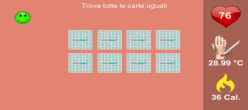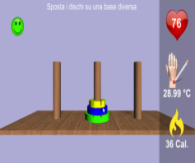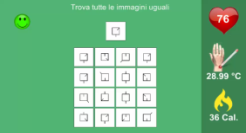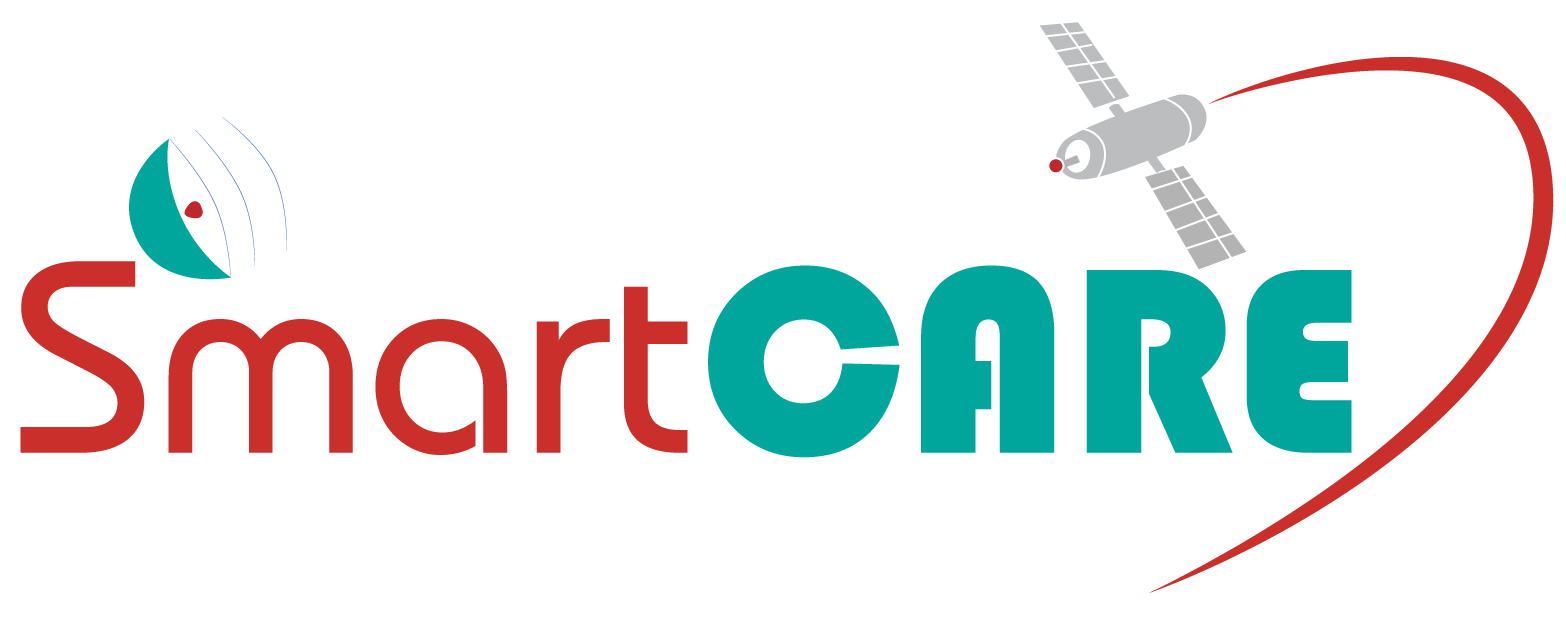
Objectives of the service
SmartCARE realizes a collaborative healthcare platform as a specialization of a more general and advanced wide workflow collaboration platform. It is a virtual space where caregiver professionals and patients are present to meet and manage daily activities, planned and unplanned, within a therapeutic process, in a collaborative way enabling an optimization of the Home Care.
SmartCARE enables to the healthcare facilities, public and private, to provide the service of rehabilitation - Neuro motor/cognitive and Aphasia rehabilitation - at home assuring a constant verification of the therapeutic process and without requiring the presence on-site of medical staff, unless absolutely necessary. The access to
SmartCARE is provided using satellite and terrestrial telecommunication networks by means of fixed or mobile devices.
SmartCARE represents also a collaborative virtual workspace where patients, physicians, caregivers and other stakeholders leverage a community to foster the active participation of people to social initiatives.
The SmartCARE services to:
- establish a point of contact with reference healthcare professionals to manage multiple patients;
- schedule the therapy in each detail;
- provide updated information on the rehabilitation progress of by means of remote live-check;
- monitor the activities envisaged by the therapy;
- alert patient, healthcare facility and caregiver, in case the prediction of improvement are not achieved;
- measure vital signs using wireless and wearable sensors;
- update clinical records,
- stimulate patients and healthcare professionals to establish social relationships to involve people in common activities and knowledge sharing.
Users and their needs
SmartCARE aims to support patients involved in neuro-motor, neuro-cognitive, Aphasia rehabilitation procedures, assisted at home by non-professional caregiver and remotely by medical staff. SmartCARE users and needs are summarized here below:
Type | Comment / Key needs |
Patient | Benefits from being assisted at home, without moving into a specialised center. |
Carer | Applies the therapies to patient at home, minimising the number of physical visits. |
Public Health service Provider | Represented by Hospitals and public groups operating in the rehabilitation service sector and controlling the evolution of therapies at SmartCARE Service Centre. |
Private Health service Provider | Represented by private Clinic, private groups, single professionals operating in the rehabilitation service sector and controlling the evolution of therapies at SmartCARE Service Centre. |
National Health Service | It is involved in control and improvement of public health. |
Social useful No-Profit Organization | They participate to the value chain providing directly the SmartCARE service via the national contributions. |
SmartCARE service provider | Provides the SmartCARE service and the appliances needed to implement it. |
Satellite provider | Provides the satellite broadband communication when the coverage of the terrestrial network is not adequate. |
Terrestrial network provider | Provides the terrestrial broadband network (fixed and/or mobile) required for the SmarCARE service. |
Appliance Manufacturer | Provide the home appliances needed to perform the SmartCARE services. |
SmartCARE aims to deliver the rehabilitation services in Italy; it can be deployed in every country in Europe or worldwide.
Service/ system concept
SmartCARE allows patients to perform rehabilitation procedures such as recognition, reorganization, classification, association, attention, comprehension and calculation, by moving upper and lower limbs. SmartCARE provides services to extract quantitative measures, regarding cognitive, kinetics, speech aspects of the rehabilitation practice. The interaction with the patient is designed as a “serious game”; it is able to motivate the patient thanks to the playful context in which the rehabilitation tasks are presented and realized. SmartCARE allows the patient to perform his/her rehabilitation program under the general supervision of a specialist, but in almost total autonomy; at the same time, SmartCARE allows the therapist to remotely monitor and assess the patient’s recovery using quantitative data on both cognitive, neuro-motor and Aphasia performances. SmartCARE uses satellite and terrestrial communications to connect patients, caregivers, physicians and the service center.
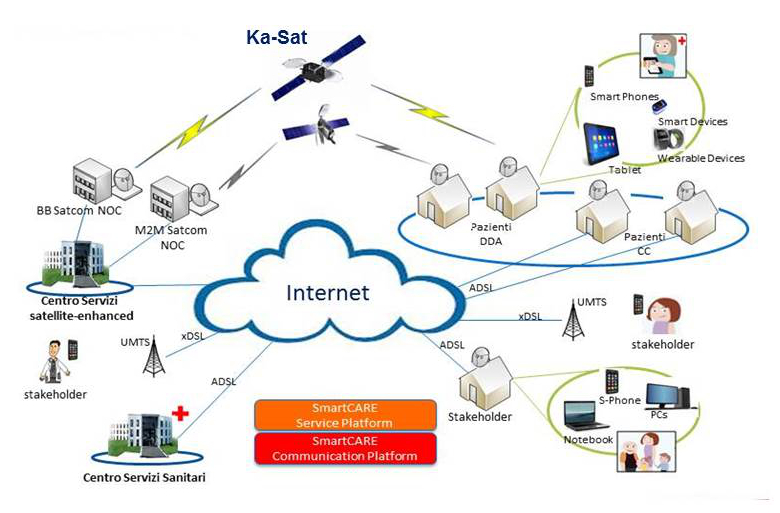
SmartCARE has two main subsystems cooperating in order to offer rehabilitation, monitoring and communication services at home:
- Subsystem at Home: offers the services of rehabilitation and communication to the final users (patients, caregivers) at their home;
- Service Centre: supports the services offered by the Subsystem at home in terms of coordination of the therapies, management of centralized information, and monitor the health status of the patients.
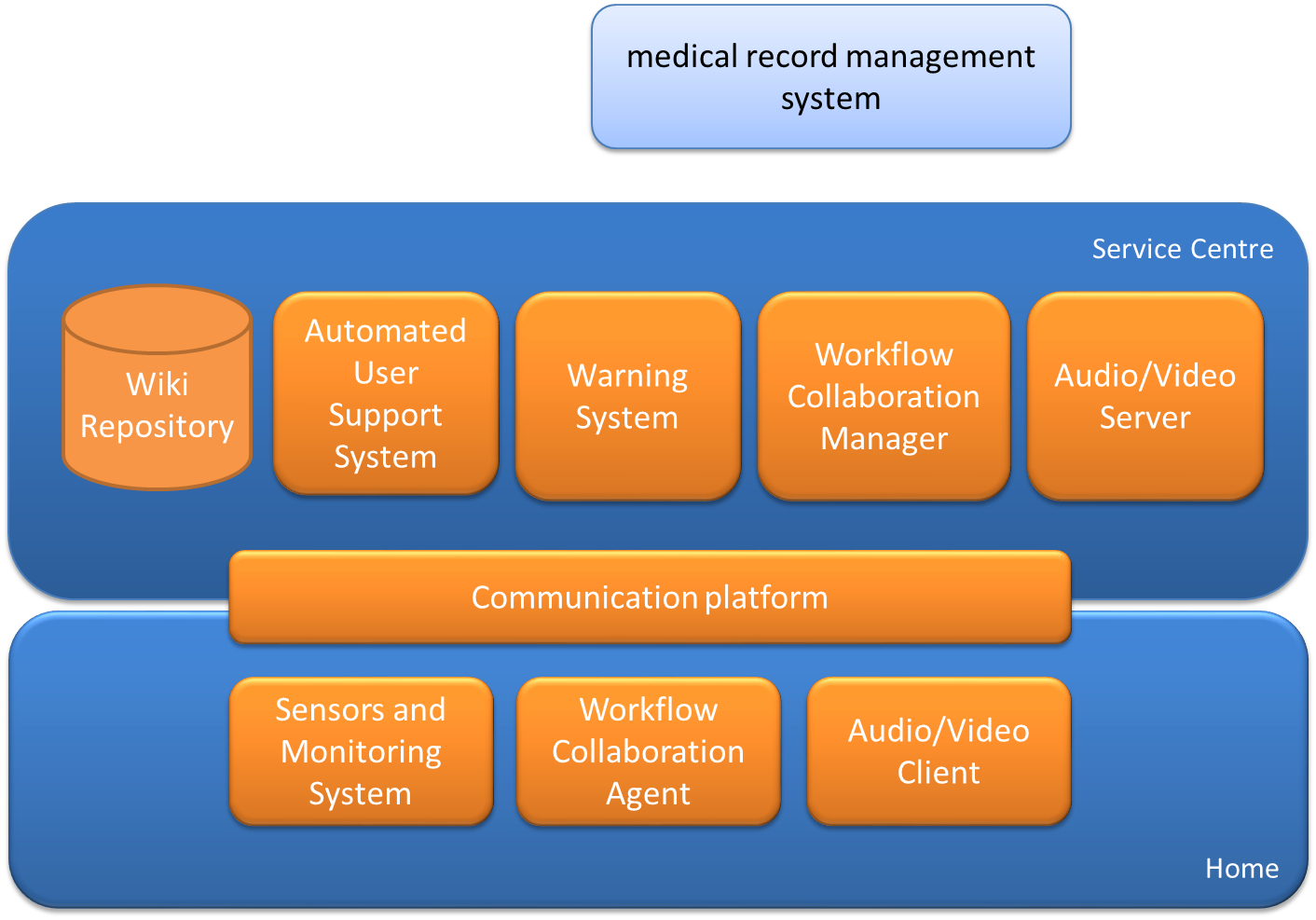
Space Added Value
SmartCARE takes into account the problem of digital divide of which still suffers a significant part of the European population, and promotes the usage of broadband satellite connections in order to guarantee the same opportunities of healthcare to the population.
In Italy, the number of citizens completely devoid of broadband communication coverage is still quite significant (equal about to 5% of the entire population). The use of satellite communications is the most effective solution to break down the digital divide and enable healthcare facilities to provide rehabilitation at home to all those patients for which it is not necessary hospitalization, regardless the location of their homes.
The service and data availability is pursued using reliable communication channels, which are always available. The integration of terrestrial communication systems (ADSL, 3G, etc.) with the satellite (Ka-band) is essential to respond to the digital divide issue and to resolve situations where terrestrial communication isn’t able to offer guarantee the performance required to support the SmartCARE services.
Current Status
The SmartCARE pilot activities for both the main part of the project and for CCN#1 (which added the Aphasia and the Multipurpose Social Community modules) have been carried out and concluded in April 2019.
SmartCARE has demonstrated how an innovative ICT platform supports the rehabilitation therapy plans to afford the neuro-motor and neuro-cognitive disease suffered by post-stroke patients. Moreover, SmartCARE has demonstrated the acceptance of rehabilitation therapy @home delivering exercises based on ‘touchless’ and adaptive interaction, advanced ‘user-friendly’ virtual graphic interfaces, gaming and simplified use of complex technologies.
Also the ‘digital divide’ connectivity issue was resolved by SmartCARE through the usage of heterogeneous connection (terrestrial, satellite) demonstrating the delivery of e-health services in every condition of access to Internet.
Acceptance analysis showed that SmartCARE has been perceived positively by all subjects (16 patients). The use of Technology Acceptance Model (TAM) has shown that the system is understandable and easy to learn and to use, attractive for aesthetic and clarity reasons.
SmartCARE users, with respect to control patients (15), exhibited a significant improvement of comprehension skills, especially related to visual word comprehension and auditory and visual sentences.
Modified Ashworth Score (MAS), on the other hand, revealed a significant reduction of shoulder spasticity and hypertonicity in SmartCARE users with respect to control group.
The deployment of a new platform with speech therapy exercises and social networking capabilities allowed to deliver a very efficient and effective platform which ensured better adherence to therapy and better patients' engagement.
The use of such a system could result in other beneficial effects on users with neurological disorders, for example:
- user-specific empowerment
- promotion of cognitive and motor training and stimulation
- promotion of speech therapy
- self-management of health
- monitoring the physical state
- strengthening of physical activity with clinical results
- strengthening of functional state
- strengthening of social participation and awareness of the disease
Analyses showed that the simplicity of use of the platform, together with the subjectively perceived utility by the patients are the main aspects that could be drivers whose influence can lead to the choice of using the platform. This aspects should be always kept in mind when implementing new functionalities or interfaces, or to effectively address a marketing campaign.
Platform characteristics and the lesson learned during the Pilot Phase candidate SmartCARE to be submitted to a further industrialization phase capable to enhance, if necessary, some component and to structure a continuous service delivery in accordance with Health Organizations (hospital, service centre, associations).
Snapshots of SmartCARE's user services @home:
The virtual scene and the real-time measurements |
|
|
|
|
|
|
|
|
| ||
SmartCARE project is included in the following dissemination actions:
| ||



